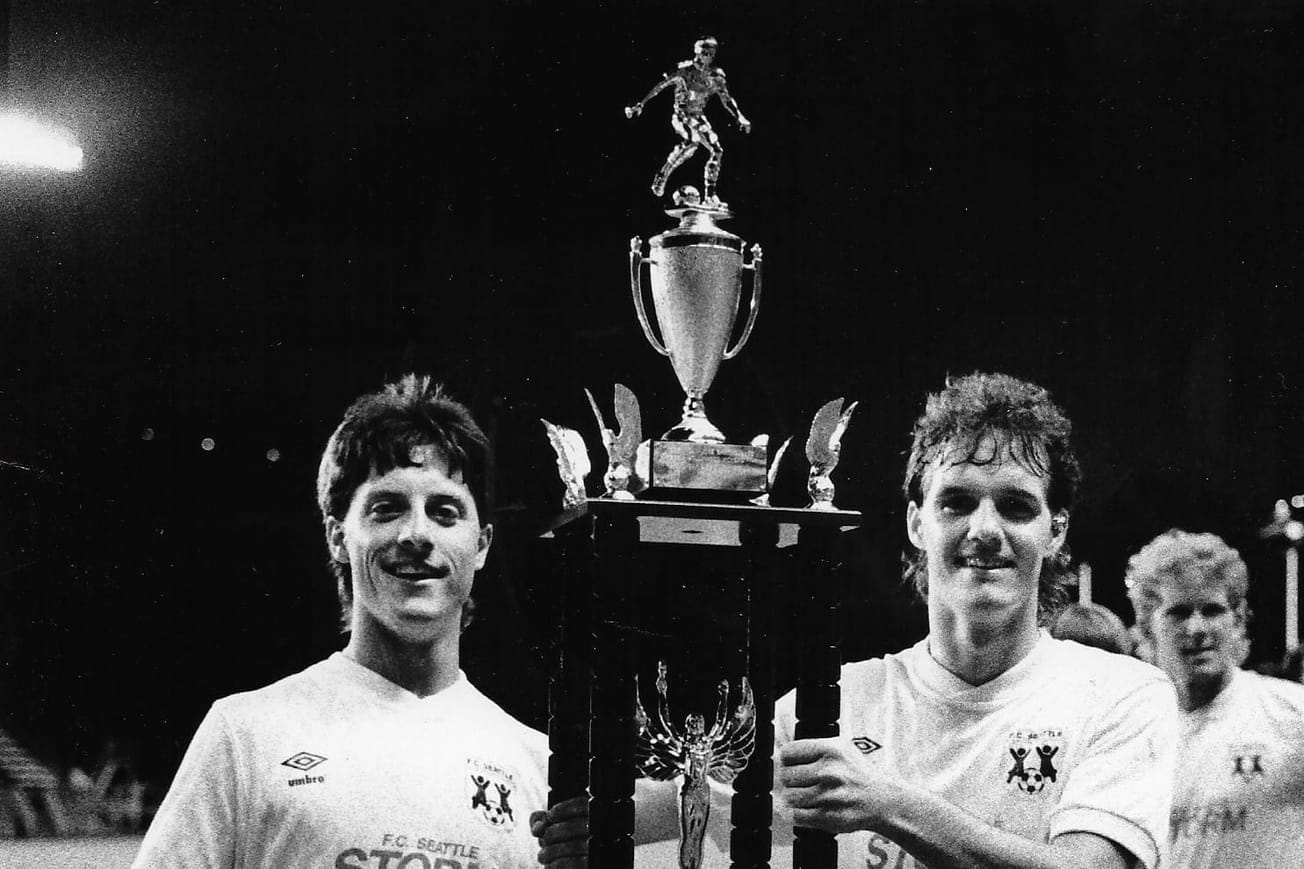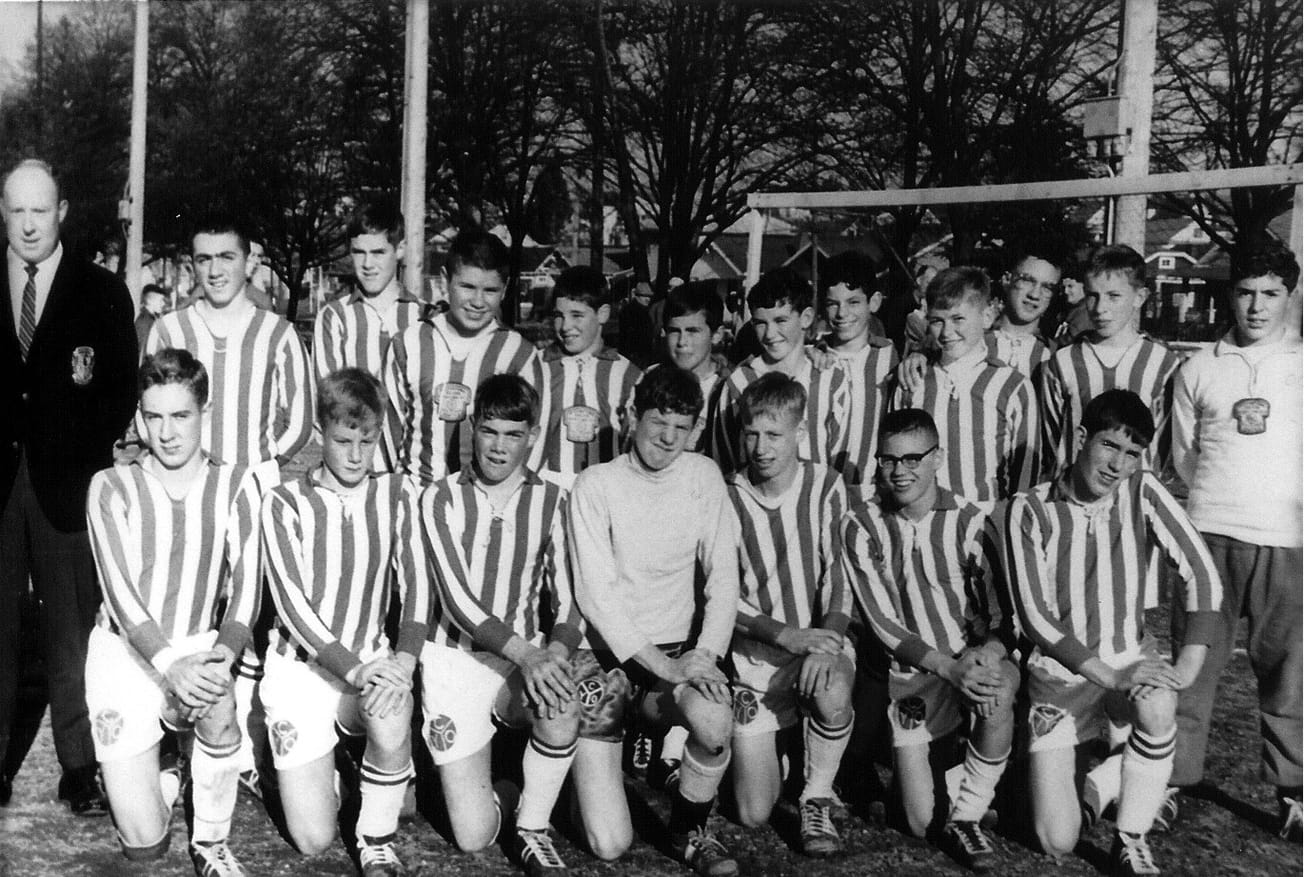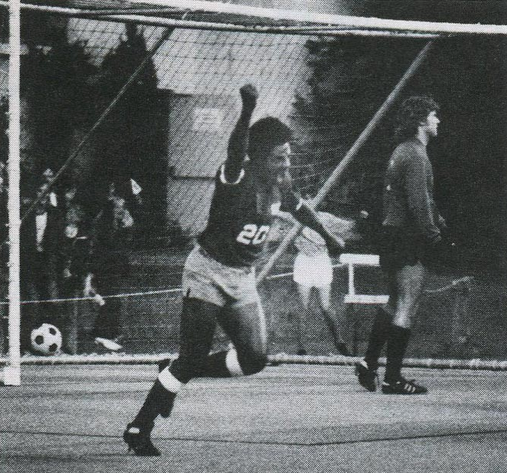Overseas tours, matches versus national teams and first division clubs from abroad makes Football Club Seattle seem almost exotic nowadays. Yet in truth, it was simply an effort to keep local pro soccer’s flame flickering when the light had all but been extinguished.
For seven seasons, FC Seattle more than just kept the lights on.
• It provided a platform for the best male and female players in Puget Sound to pursue their craft and vie for a place on the national team.
• It gave fans a traditional alternative to the thumping beat, laser lights and frenetic pace of the indoor game, then at its peak.
• It became the first Seattle pro or semipro club to play outside North America.
• And it reinforced the region’s image as a bastion for the game by contending for multiple league championships and winning one.
Dark Times
To understand just how important FC Seattle was to the creation of what we now take for granted as an American soccer capital, top MLS market and 2026 World Cup city, one needs to take the time machine back to the dystopian landscape of American footy in 1984.
Imagine a day when professional, traditional soccer has gone dark. No MLS, no USL. And there’s no telling when it will return. Where crowds had regularly numbered about twentysomething-thousand, there are vast swaths of empty seats. Once an adored club, the Sounders’ name and reputation was in tatters.
Suddenly, the game had retrenched. Franchises had folded, leaving a frayed fabric across the continent where, just a few years before, crowds had been huge, and young U.S. talent was just beginning to bloom.
FC Seattle owner Bud Greer had flirted with rescuing the Sounders prior to their demise in 1983. Instead, Greer was gung-ho on providing his existing network of youth clubs and premier men’s and women’s teams what was lacking: professionally run programs that would test themselves against the very best.
The Challenge
A cadre of ex-Sounders would guide the men, beginning with an ambitious challenge series. Coaching director Jimmy Gabriel and head coach Tommy Jenkins, both Sounders alums, picked a team of college stars and ex-pros to face Vancouver, Minnesota and New York of the North American Soccer League at Memorial Stadium.
The four-game series would culminate with a sendoff match against the U.S. Olympic Team. Those matches, starting with a 2-2 draw versus Vancouver, were all competitive, and attendance averaged nearly 7,000.
“The opportunity is the biggest thing it presented the college guys in the area,” observed Tad Willoughby, who played five seasons with FC Seattle, “because the NASL folding hurt our cause, our hope of playing professionally anywhere. It gave us that footing, that opportunity to play those professional teams.”
Notable Names and Feats
International teams and nominal pay were brought into the mix in 1985. Among those who found playing for their hometown teams against all-comers were some recognizable figures. Tacoma native Jeff Durgan, captain of the U.S. national team and 1980 NASL Rookie of the Year, declined offers to stay with the Cosmos to come home. After winning an indoor championship with San Diego, Brian Schmetzer joined his twin younger brothers.
But a FIFA ban on English clubs following the Heysel Stadium disaster prompted FC Seattle and three like-minded clubs to form a league, the Western Soccer Alliance. The WSA would expand each summer, eventually becoming the Western Soccer League, with 11 teams in seven states. Seven WSL players would represent the United States at the 1990 World Cup.
Greer, who back in 1984 had considered the Sounders brand damaged, added a nickname in 1986. The Storm were runners-up in the WSA their first three seasons before a dominant 1988 season was capped by a 5-0 demolition of the San Jose Earthquakes. All 11 starters in the final had attended either high school or college in Puget Sound.
Life Experience
In lieu of pay, Greer gave players a life experience. The Storm embarked on postseason tours of Britain in 1987 and 1988, playing five preseason friendlies against clubs from various divisions, including Middlesbrough, QPR, Portsmouth and Bournemouth.
“When we went to England, that was huge,” said Jeff Koch, Storm goalkeeper from 1986-89. “You’re playing against all those teams you might’ve only heard and read about. To go over there and experience English professional soccer at a young age and realize we’re not that far off, that we can play. I would take that trip in a heartbeat over pay.”
More Than A Team
FC Seattle was funded to the tune of about $1 million per year ($2.7M in 2024 dollars) and that money was spread beyond the Storm.
“Bud Greer deserves a ton of thanks and love for what he gave all of us,” said Peter Fewing, who played six years with the club. “Bud made it first class and lost a lot of money on that deal.”
The organization brought a women’s premier team into the fold in 1987. The Cozars, founded by Booth Gardner before he was elected governor and featuring future World Cup stars Michelle Akers and Shannon Higgins, then won the WSA women’s tournament and were national runners-up.
The FC Seattle City League featured men’s and women’s teams in six Puget Sound cities and fed talent to the senior teams. There were school assembly demonstrations, day camps and clinics throughout each year and fundraising and promotion for the Cystic Fibrosis Foundation and Washington Special Olympics. A 1988 Sounders reunion game resulted in FC Seattle’s largest attendance in four years.
Locals Hold Their Own
“In the beginning it was all guys you grew up playing with on clubs, a chance to play meaningful games against quality opposition. Unfortunately, we didn’t get paid for it,” said Peter Hattrup. “In ’88 I wish there had been a final against the ASL winner, because I think we were better than anybody we would’ve played.”
In its final two seasons, FC Seattle brought in more proven pros. Among them were USMNT captain and former Cosmos regular Ricky Davis and Tacoma native Brent Goulet, the 1987 U.S. Soccer Player of the Year. Both were bidding, unsuccessfully in the end, to become part of the World Cup squad.
“People talk about (the WSL) not being first division and that, but before MLS, all the players were playing in the MISL (indoor), WSL, APSL or whatever leagues were happening at the time,” said Chance Fry, a U.S. international who played for the Storm as well as both the NASL and A-League Sounders.
Rising Costs
Just as the sun seemed to be rising on American soccer’s horizon, with the prospect of hosting the 1994 World Cup, FC Seattle would pass into history.
The WSL and East Coast-based ASL agreed to merge and form a national circuit, the APSL, a.k.a. the A-League. That would require owners to ante up still more money for salaries and travel, and Greer was unconvinced it made financial sense. After a year of dormancy, the Storm was shuttered in 1991.
“The Storm’s never been really recognized because we weren’t called the Sounders,” claimed Eddie Henderson. “That’s all. It wasn’t because of the quality of players. I would even argue that the FC Seattle team was as good as any of the A-League Sounders teams that won championships.”
What’s In A Name?
However, FC Seattle left a weighty legacy. The WSL, which was run by Storm management, is at the root of the A-League and the USL, which is still thriving. A handful of those players proceeded to become successful college head coaches, while countless others are involved in youth clubs and academies. Chris Henderson, Wade Webber and Schmetzer have been immensely influential and involved in the success of the MLS Sounders.
The most direct effect of FC Seattle on the Sounders’ trajectory came only a few years after the final match. Nine alumni eventually played for Seattle’s next A-League team, and when the Sounders claimed their first of two consecutive championships in 1995, Webber, Fry and Hattrup (the league MVP) were vital cogs.
“FC Seattle was a great vehicle to bridge the gap until the A-League Sounders emerged on the other side,” noted Bruce Raney, an NASL draftee out of Seattle Pacific and scorer of FC Seattle’s first goal. “It was a fantastic bridge between the original and the next stage which finally led to Major League Soccer.”
A three-part FC Seattle series is available at Frank MacDonald's blog, frankmacdonald.net.








